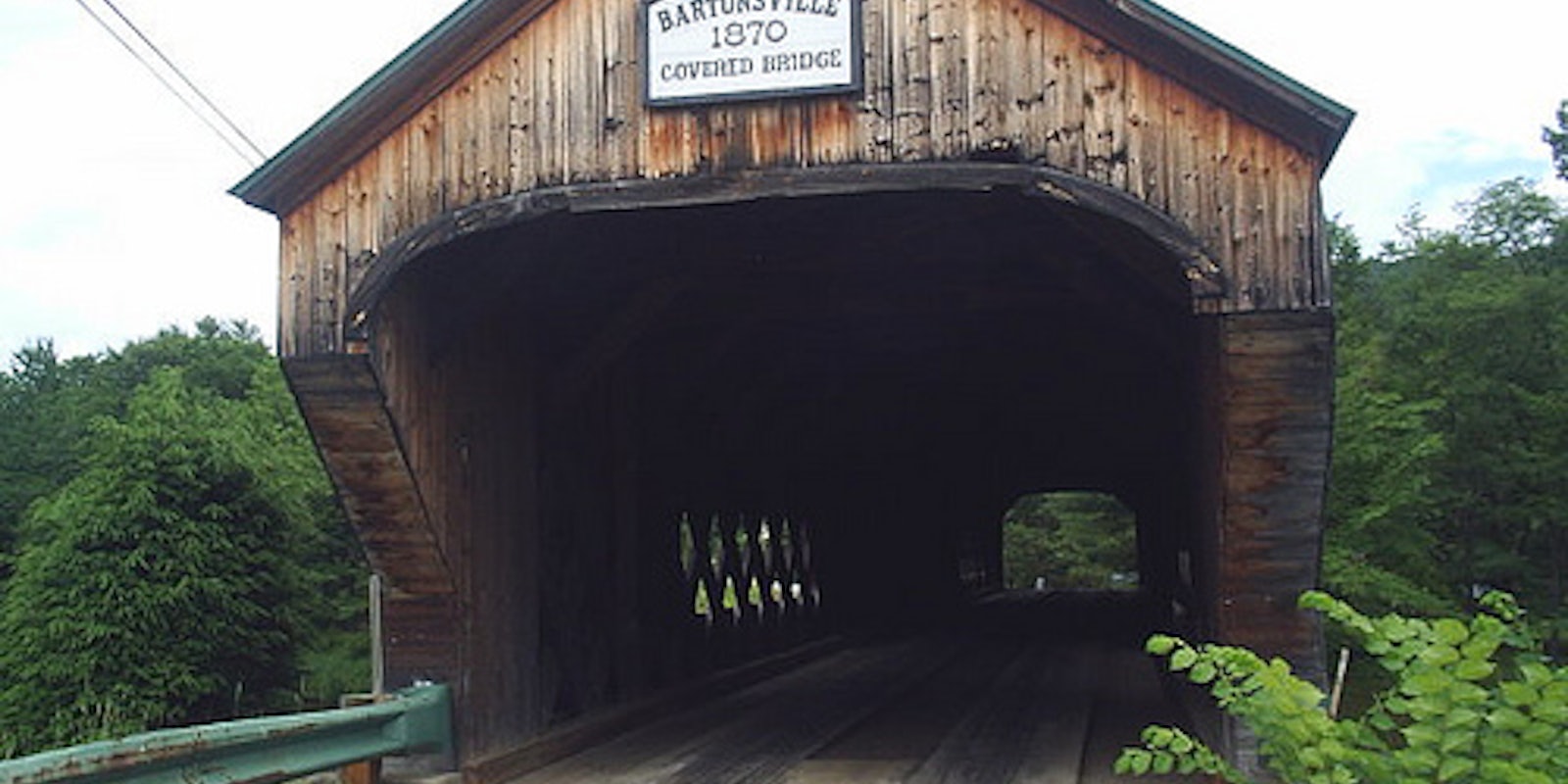No one had ever seen the Williams River, a normally bucolic stream, like it was on Aug. 28 as Tropical Storm Irene pounded the state of Vermont. Not even the people who grew up in the village of Bartonsville.
People like Susan Hammond.
As the Williams bulged to a muddy, raging mass of water, Hammond couldn’t take her eyes off her small digital camera, as she franticly deleted pictures and video, hoping to find more space on the memory card. Meanwhile neighbors were running down the road, called by the screech of steel and wood that couldn’t hold on any longer: The Bartonsville Covered Bridge was about to collapse.
For most, the collapse of a bridge would be seen as an inconvenience more than anything; so long as no one was hurt, everything will be ok. But in a town like Bartonsville, and other small communities like it, this bridge was more than just a means of getting from point A to point B. This covered bridge was part of their identity. Built in 1870, the bridge had been a part of the town for generations.
But when it looked as if Hurricane Irene, by then downgraded to a tropical storm, would take out the century old structure, people came to watch and in the middle of the group was Hammond, who was just deleting the last images from her camera before pointing it up the road.
Within seconds the bridge finally gave way, wood cracking like a million toothpicks.
“Shit,” she said, watching the bridge through the camera screen, now stained with rain drops. “Oh my God.”
In less than five seconds, the Williams River took out what had stood for 141 years.
While people mulled about in the rain, already asking how the community could rebuild, Hammond rushed home to put the unedited video online. Since many townspeople had gone home to retrieve other family members before the bridge gave way, some missed the collapse and Hammond knew everyone would want to see what had happened.
“I had no idea anyone beyond my little Facebook world would see it,” Hammond said later on.
A half hour after the video ended up on You Tube, the tiny village lost power.
Although Hammond had lost computer access, she still was able to retrieve email on her phone, which is how she found out that the video had gone viral within a matter of hours. Soon CNN, NBC and the Weather Channel were also trying to get ahold of Hammond, wanting to get permission to use the video.
Within hours of Hammond rushing home to upload the video before they lost power, it was being broadcast across the county and likely viewed by millions.
“It got picked up by everyone,” Hammond said in an interview last week. “I was amazed by how many people saw that video. I guess that’s what happens when it gets on CNN, NBC, the Weather Channel and wherever else it ended it up.”
In the days to follow, Hammond did dozens of interviews, but without power she never saw where those interviews ended up. In the last month the video has gotten more than 400,000 views and according to Hammond the attention the video brought to the damage in Vermont has helped the town in their fundraising efforts to rebuild the bridge, which are expected to kick into high gear in the next few weeks. So far $10,000 has been raised.
“I think it definitely helped. We’re getting donations from all over the country,” she said. “It became a symbol of the storm, at least for Vermont.”
Hammond, who serves as director for the non-profit War Legacies Project, has been involved in the fundraising to help rebuild the bridge, although the village also had an insurance policy on the structure, which could cover part of the repairs. Hammond said it’s still unknown if the covered bridge will be rebuilt or if a modern concrete bridge will replace it. Once the final decision is made, fundraising for the covered bridge would begin in ernest.
Beyond the attention the video received, Hammond was surprised by many of the negative comments about her emotional response, which can be heard on the video. Most of the comments have since been blocked, but her response remains.
“One thing I apologize for is my choice of words to express my anger at the river taking our beloved bridge that I crossed, my parents crossed and my grandparents crossed for many decades,” she wrote in the comments section. “I honestly didn’t think anyone but friends, family and neighbors would view this video and if I had had the time and electrical power to edit it as our power was flickering I would have but the video took a life of its own once posted.”
As one commenter said, “welcome to the internet my friend.”
While Hammond works on a fundraising website just for the bridge, donations are being accepted through www.rockbf.org
